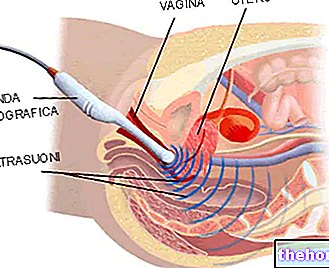Generality
Self-examination is the first "prevention" tool for breast cancer.
This simple self-assessment test allows you to learn about the structure and the general appearance of the breast, therefore it allows you to detect any unusual changes with respect to the basic physiognomy of the breast at an early stage.

If done correctly and regularly, breast self-examination can limit the risk of diagnosing advanced cancer.
What is it for
Periodic self-examination allows you to know the normal appearance of your breasts and to notice any changes and any irregularities.
The signal that most frequently leads to the discovery of a tumor is, in fact, the presence of a nodule. Usually, this lesion is not painful, but palpable or even visible.
To identify unusual changes early, attention must also be paid to the appearance of the nipple (which can retract, become more protruding or secrete liquid) and of the skin, especially when these affect only one breast.
This simple gesture therefore allows you to keep the breast tissue under control and to regularly check if it is homogeneous or has nodular indurations never found in previous self-examinations.
Breast cancer
- Breast cancer (or breast cancer) is the most common malignancy in the female population.
- The neoplastic process derives from the uncontrolled and abnormal growth of some breast cells, in which the genetic material is "damaged"; the whole of these "clones" forms a tumor mass inside the mammary gland.
- The nature of the tumor can be benign (fibroadenomas or cysts) or malignant (carcinomas). These latter lesions are the most dangerous, as they can progress and become "infiltrating" or "invasive", ie they can involve the tissues close to the breast or other parts of the body.
- Early diagnosis is especially possible due to the large-scale spread of mammography screening programs. Furthermore, it is advisable to regularly undergo the tests indicated by your doctor based on age and personal history.
- The possibilities of cure and recovery depend, in fact, on the stage in which the neoplasm is at the time of diagnosis (localized, diffuse or metastatic) and on its biological characteristics (benign or malignant nature): different types of breast cancer, in fact , have different growth rates and responses to therapies.
- Breast cancer treatments currently available include surgery (such as quadrantectomy), chemotherapy, radiation therapy, hormone therapy and biological therapies. These therapeutic approaches can be used alone or in combination, depending on the patient's characteristics and of the disease.
When you do
From the age of 20, breast self-examination should be performed once a month, between the seventh and fourteenth day of the menstrual cycle (if the latter is regular, it is advisable to fix a stable day).
The structure of the breast is in fact susceptible to changes in hormone levels that occur monthly: knowing your body allows you to distinguish which changes are to be considered "normal" and avoid, in some cases, confusion or false alarms.
About a week after the end of the cycle, the breasts are less painful and turgid, therefore certain changes in the breasts are more easily perceptible; if you are pregnant or in menopause, the timing of self-examination is indifferent.
It should be remembered that other signs such as retractions or changes in the skin, secretions of fluid from the nipple or changes in the shape of the breast should also prompt you to consult a doctor.
There are also cases in which the disease is not associated with obvious signs and recognizable changes. Therefore, self-examination must be combined with regular breast examinations and more precise instrumental examinations, such as breast ultrasound (generally recommended from 30 years of age) and mammography (from 40 years of age).
How it is done
Self-examination takes place in two phases: observation and actual palpation.




























